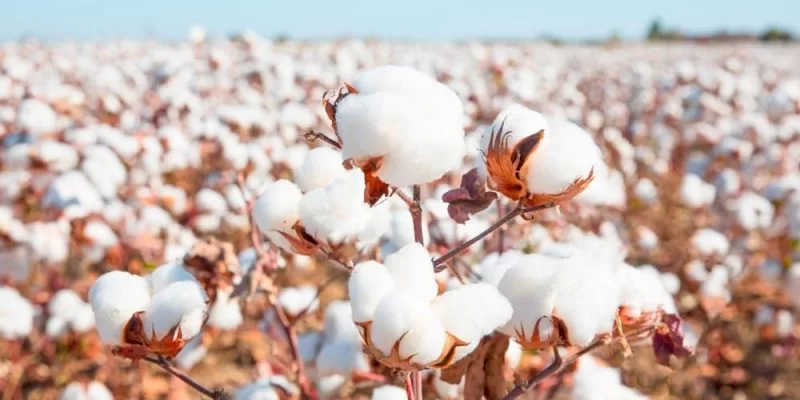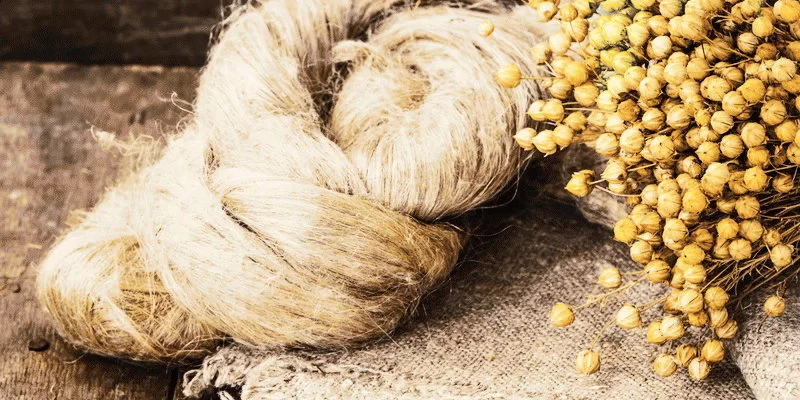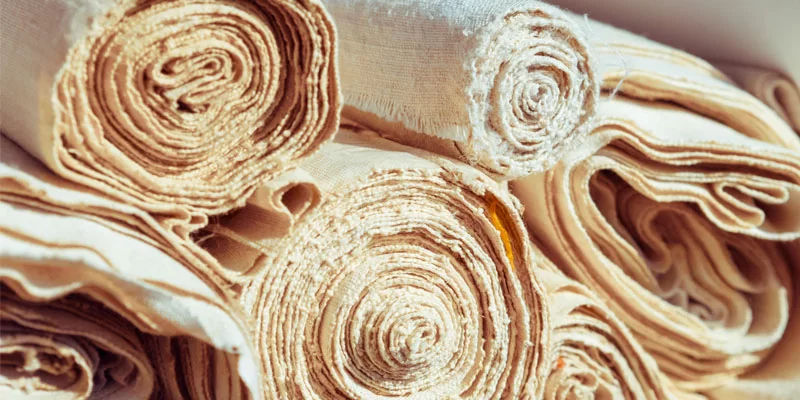There are not so many fabrics of natural origin in the world that have a number of valuable properties, such as the ability to absorb moisture and pass air. Cotton and linen are one of them. These are the “old-timers” of the textile industry, which are among the most common in the world. How are they good and how do they differ from each other? Our experts know the answer.
Ancient and versatile cotton: development history, production, properties

The fabric obtained from the fruits of cotton has been known to the world for many hundreds of years. It was first mentioned in ancient Egyptian chronicles. The oldest products made from cotton are about 5000 years old. India is considered to be the birthplace of cotton. In her ancient writings, it was mentioned as the material from which the pillows of the gods were made, allowing you to achieve peace.
Cotton came to Europe only by 350 BC. Then it spread to Africa. In Ancient Rus’, the material became known much later — only in the 15th century, and began to be produced everywhere after four hundred years.
At first, cotton production was considered labor-intensive and financially costly. Over time, special devices were created that made it possible to simplify the technology for manufacturing cotton-based products. Its modern version is conditionally divided into the following stages:
-
Collection of cotton fruits — after their ripening, seed bolls are collected (manually or by machine);
-
Separation and fiber sorting — pre-weighed raw materials are sent to the ginnery — seeds and fibers are separated, then the latter are sorted by length;
-
Pressing and creating yarn — the fiber is pressed, yarn is created from the resulting bales;
-
Creating a fabric from threads — threads are created from the resulting yarn, intertwined with each other to obtain a finished fabric.
-
Cotton fabrics are used to create clothing (including sportswear), curtains, furniture upholstery, etc.
The main advantages of cotton fabric:
-
Hygroscopicity — perfectly absorbs moisture, which is important when it comes to bed linen or towels;
-
Breathability — fabrics made of cotton are highly breathable, preventing sweating in the hot season and providing pleasant warmth in the winter;
-
Strength — cotton-based material has a high degree of strength, allowing the fabric to withstand significant mechanical stress;
-
Antistatic — cotton is not electrified — the material is not capable of incandescent electric charge;
-
UV protection — perfectly protects the skin from ultraviolet exposure, which is important for residents of the southern regions;
-
Softness — Cotton-based fabrics provide exceptional comfort in contact with the skin.
-
Among the minuses of cotton, one can note a strong wrinkling, a tendency to shrink, the appearance of yellowness with prolonged wear.
Rough and durable linen: origin and unique features

Although lately linen has been gradually replaced by synthetic materials, this fabric with an incredibly ancient history of development is still highly valued by both professionals and ordinary consumers. Despite the fact that for a long time of its existence, flax has not changed much (neither visually nor in its properties), this natural material still surpasses many modern analogues in quality and key characteristics.
Annual fiber flax traces its history back to ancient times: even in ancient Egypt, this plant was used for sewing clothes, and only privileged layers could afford it. Often, snow-white linen was considered a sacred cloth, which was worthy of wearing only by those who were close to religious rituals: priests, priests, etc.
Over time, many fabrics of synthetic and mixed origin appeared, but linen was not forgotten. The production technology of this fabric, amazing in its properties, has changed, but the material itself has remained practically unchanged.
In the process of obtaining raw materials from the stems of a plant for the manufacture of flax, a simple and effective technology is used:
-
Pulling flax — sometimes — pulling (the plant is uprooted);
-
Drying in sheaves;
-
Separation of the hard part of the stem;
-
Combing flax with special combs — as a result, the fibrous mass is gradually separated.
It turns out the so-called roving tape, used as yarn to obtain threads, from which linen is created. The natural color of the finished material is light gray or beige. It is this option that is considered the most fashionable and valuable, because under prolonged exposure to sunlight, the products become white. By the way, in the old days, this is how flax was bleached: under the open sun, after wetting and spreading it in the open air.
Short bunches of semi-finished linen are usually used to obtain coarse materials: burlap, canvas, etc. By the way, once upon a time, high-quality, long linen could successfully replace money (it was used as payment in many countries).
Flax is a unique plant, because each part of it has found a worthy application. So, the seeds serve as a source of valuable linseed oil used in cooking and cosmetology, the rump (hard stem) is used as sound insulation in construction, and flax threads are used to create many varieties of natural fabrics.
The final cost largely depends on the softness, type of processing, and thickness of the material. The most valuable and, accordingly, high-quality product is made in Italy and Belgium, the most widespread in the States and Canada. Domestic linen somewhat loses in quality to all of the above, but at the same time it has a more favorable cost.
What are linen threads used for? They serve as the basis for the manufacture of clothing, underwear and bed linen, towels, upholstery fabrics, ropes, canvas, burlap, etc. In addition to 100% linen, fabrics with additives are also very popular: for example, cotton, lavsan, viscose. Such materials are valued lower, but at the same time more practical: they do not stretch during operation and do not wrinkle so much.
The main benefits of flax:
-
Hygroscopicity — perfectly absorbs moisture, which is important when it comes to bed linen, light clothing and towels;
-
Hypoallergenic — linen fabrics are suitable even for those who are prone to allergic reactions — the material will not cause discomfort when in contact with sensitive skin;
-
Breathability — fabrics made of linen are breathable, providing comfort in the hot season and pleasant warmth in the winter;
-
Durability — linen-based material has a high degree of strength, allowing the fabric to withstand significant mechanical stress;
-
Antiseptic properties — it is believed that flax is able to heal small skin inflammations, kill fungus and other pathogenic microbes;
-
Antistatic — flax does not electrify, since the material is not able to accumulate an electric charge.
-
Among the disadvantages of linen, one can note only a tendency to shrink after washing and to wrinkle during wear.
Key differences
Each of the materials discussed above, of course, is considered an excellent example of the quality of natural origin. But, nevertheless, our experts made a thorough comparison, highlighting the “winner”.
|
|
|
|
|
|
Natural color white, cream, fabric surface matte
|
Natural color — gray, beige, surface slightly shiny
|
|
|
Soft, pleasant to the touch
|
Rough to the touch
|
|
|
Medium
|
High
|
|
|
High probability
|
Average probability
|
|
|
High
|
Doesn’t have
|
|
|
not particularly identified
|
Natural antiseptic
|
|
Individual characteristics
|
Warms well
|
Cools well
|


Добавить комментарий
Для отправки комментария вам необходимо авторизоваться.